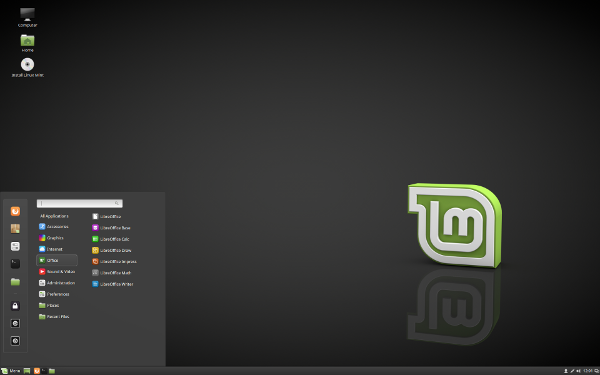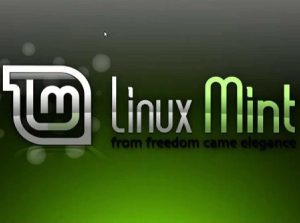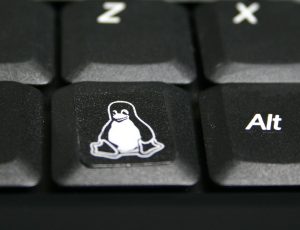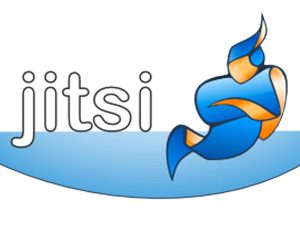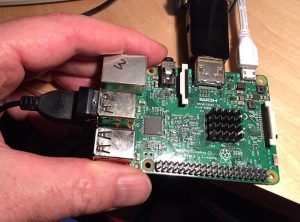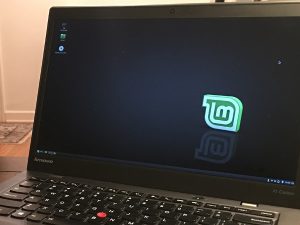Remember the previous two blog articles about switching to open source / free software? The first was about switching to free / open source programmes whilst still using Windows, and the second was about downloading the Linux operating system onto a datastick so that you can play with it and familiarise yourself with it, but keep Windows in the mean time. So if you want to switch to open source / free software, do those things first before you have a go at playing with Linux.
So now I’m going to blog about my experiences with Linux launched from a datastick. I was dreading it, actually – but it was easy. The first thing I discovered though, was that it’s OK to play with Linux on a datastick, but it doesn’t keep things that you install, or bookmarks etc. And you have to put your wi-fi password in every time. It doesn’t remember anything when it’s on a datastick. And it’s slower than if it were installed on the hard drive.

But the datastick is only for familiarising yourself with Linux. The next step is to install Linux on your hard drive, alongside Windows (at least at first). Then it will remember all your changes, installations and bookmarks. But that will be the next article in the series. (Of course, if you’re more technically-minded than me, you may have missed out the datastick step and installed Linux straight onto your hard drive. I wanted to test it from a datastick first).
Remember that I’m not a technical person by any stretch of the imagination, so if I can do this, so can you. I’m going to list all the things that I normally do with my computer, and describe how I got on attempting to do that in Linux. The fact that I’m not very technical means that this list isn’t very long. However, if you use much more software than me, then the likelihood is that you’ll be more technically adept than me, and probably won’t require much guidance.
You’ll notice that I still use some corporate software – sorry. As I get more experienced, I’ll move to open source / free alternatives.
Launching
Once you’ve got Linux on a datastick, put it into your USB port and switch the computer on. It will automatically launch Linux from the datastick. If it doesn’t, see the end of the previous article.
You’ll then see a screen like this.

The menu button bottom left, is key (and by the way, how much more sense does it make calling your menu button ‘menu’ rather than ‘start’ – especially as it’s also the route to switch off?). It comes with lots of open source / free software already installed – including Gimp, Firefox, Libre Office (text documents, spreadsheets, database, presentations etc.), media players and more.
Get online
I clicked on the internet icon in the bottom right corner, found our connection in the list, clicked on it, entered our wi-fi password, and voilà– connected. Firefox is already installed. On the menu, the icon at the top left is the Firefox shortcut. I clicked it and was online. Then everything was the same as in Windows. I made Google (I know, I know) my home page, added some bookmarks to the toolbar, and it all worked. As I said though, you’ll lose these things when you close down – but you can keep them all once you’ve got Linux installed on your hard drive.
Printer
To print, you have to make Linux see your printer. I braced myself for the worst. My experience with printers tells me that they are an avowed enemy, and need to be tricked into doing what you want them to do. I had my installation CD handy in case it was needed. It wasn’t. I clicked on menu, then, in the left-hand column, the little icon with the cogs and gears is the system settings control centre. (If you hover over any icon in the menu, you can see what it is in the bottom right corner of the menu box.)
I couldn’t see anything to do with printers, so I typed ‘printer’ into the search box in the top right corner. A little printer icon appeared, which I clicked. The name of our printer appeared, I clicked it and a little wizard opened. I kept saying yes (or rather, ‘forward’) to whatever it asked, until I got to ‘apply’. I clicked the apply button and it asked me if I wanted to print a test page. I said yes, and it worked. Just to be sure, I opened a Libre Office document, typed a few words and chose print from the file menu. It printed. Hooray!
Dropbox
When working in Windows, I synch all my files with the cloud, using Dropbox. I know, corporate software – next task is to find an alternative. I find it pretty essential to save to the cloud though – otherwise I’d have to back everything up every time I log off, or risk losing work if my laptop gets stolen or dies (which has got to be soon; it’s a miracle it’s still alive).
I thought I’d have to download Dropbox again, and wrestle with making it synch with folders on my computer (like I did previously in Windows). I didn’t have to worry. There’s a little Files icon on the taskbar at the bottom of the screen. I clicked it and underneath the Linux folders was a section called ‘devices’, in which I could see all my Windows files. I could open documents and work on them. But a) would my changes remain back in Windows, and b) would they be synched with Dropbox? I closed down the computer, took out the datastick, turned the computer on again and was back in Windows. I checked the documents, and they’d been changed in Windows and in Dropbox. Easy. When I install Linux on the hard drive I’ll have to install Dropbox again, and synch it with my folders – but I’ll cross that bridge when I come to it.
Jitsi: online calls and video chats

Skype is part of Microsoft, but it’s really not difficult to dump it. It’s much more difficult to replace huge platforms like Facebook, because that’s where people are. Any non-corporate rival would have to have the numbers, right from the start, or it would be very difficult to build them. No-one wants to come to a social media platform that their friends aren’t on. I think there’s potential to build a platform with ‘our kind of people’ on – that wouldn’t harvest your data, have inane comments or advertising. A social media platform full of people who don’t want to be on a corporate social media platform – I’d go for that.
But as I said, Skype is much easier to get rid of, because you can use free, open source Jitsi instead. When you want to talk with someone, send them a link to download Jitsi.
However, as I write, I have a problem. When you go to Jitsi.org, you can download various versions, depending firstly on whether you have Windows or Linux, and then if you have Linux, what flavour of Linux you have. I checked the Windows download and it was a wizard – in other words it held your hand and did everything for you. But when I clicked on a Linux Mint download, a page opened with some text that started with something like ‘Welcome Linux geeks’. I sensed that this was going to be difficult. I’m not a geek – not when it comes to IT anyway.
And sure enough, I didn’t understand much on that page. I searched and found a video that explained how to download Jitsi in Linux, but it didn’t work for me – it always told me that the download had failed. I’ll ask a techie friend and get back to you. It’s ironic that in Windows, it appears that I can download Jitsi easily, but not in Linux. The attitude that Linux is for geeks is changing, so soon, hopefully, all instructions will be for non-geeks.
In the mean time, it’s easy to install Skype. I went online and Googled ‘install Skype for Linux Mint 18 (the version I have). A YouTube video came up top. Following it was really simple. Click on the menu, and if you hover the cursor over any icon, you’ll see a little description in the bottom right corner of the menu box. The icon directly underneath Firefox, in the left-hand column, is called software manager. This is what you use to download and manage all your programmes. Click on it, and type Skype into the search box. You’ll get a list, and Skype should be top. Double-click it and you’ll get an install button. Click – there will be a progress bar at the bottom, and it should take a couple of minutes, after which it will say ‘installed’. Couldn’t be simpler.
Then go to menu / internet / Skype. It works exactly the same as in Windows, it just looks a little different, and I noticed it makes different noises! Actually, I found it easier to use than in Windows – I don’t know why exactly. It just feels ‘cleaner’ and more intuitive, which is unusual for me!
Website

Our site is built in WordPress (open source), and it’s just a case of getting online, logging in from the login page using username and password – exactly the same as in Windows, in other words.
Print screen
This is something I use a lot. Images are sometimes difficult to manipulate or save, and I sometimes just want to save / use exactly what I can see on the screen. In Windows, there is a ‘prt sc’ button (aka print screen button) near the top right of the keyboard. If I press that, it saves whatever’s on the screen, and I can then paste it into Gimp to crop / resize etc. I find it very useful.
I tried this in Linux, and the print screen button didn’t work. I Googled ‘print screen in Linux Mint’ and got the answer immediately. Go to menu, then applications / screenshot, and you have the option to save what’s on the screen as an image somewhere, or copy to clipboard, then you can drop into Gimp and play with it. It even asks if you want to keep the cursor in the image or not.
Create a PDF
In Windows, Libre Office documents have a button that creates a PDF from the document you’re in. I use it quite a lot, when I create printable topic introductions for Lowimpact.org. I couldn’t see a button on Libre Office in Linux, but a search revealed that I could find this facility under File / Export as PDF.
Finally
There will be more about using Linux in the next article, when it’s on the hard drive.
Remember, if you come across any problems doing any of the things above, or anything at all – just do a search for your problem and there will be forums, videos and advice on how to solve it. Free software people are generally geeky and they love to share information – so there’s tons of it out there.
——————————————————————————–
This is one of a series of articles to help you jettison corporate software altogether.
- Switching to open source software – blogged here
- Getting Linux onto a datastick – blogged here
- Learning to use Linux (this article)
- Installing Linux on the hard-drive (coming soon)
- Get a new laptop with Linux
- Getting Linux via a ‘raspberry pi’ (very easy, and much cheaper than a laptop)

